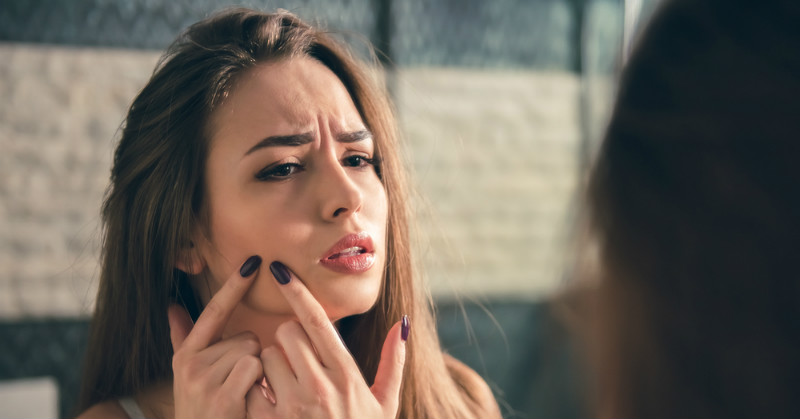
Acne is an unwelcome guest. We all are very aware of the horror of sighting a pimple – the redness, that pain on the spot – and this invariably happens before a special event, a date or on a day when you can handle anything but not that painful, hideous pimple. Now, most of us are well stocked with our acne creams and are always on the lookout for various natural ways to make sure they don’t happen, and even if they do, that they don’t leave scars. But truth be told, there is no foolproof method to deal with this issue by yourself. We spoke to two dermatologists – Dr. Apratim Goel and Dr Aparna Santhanam and here are 10 treatments to reduce acne that you should know about.
1. Medi-Cleanup For Oily Skin

Oily skin leads to clogging of pores by the sebum or oil accumulating on the skin forming open or closed comedones – commonly called whiteheads. These in combination with bacteria form acne and so should be removed as they show up. “Go for a medi-cleanup which includes extraction of these comedones by experienced skin therapists. In case of closed comedones, a special technique is required to open and extract without scarring your skin,” says Dr. Goel.
Also Read in Dermatologist Recommendation in Hindi
2. Oral Medication Helps
Reducing acne involves a combination of oral and topical (application treatments) used judiciously to get best results, according to Dr. Santhanam. She says oral antibiotics – low dose ones – used daily or cyclically help reduce the infection and hasten healing. Also, oral retinoids – isotretinoin shrinks the oil glands and helps treat acne from the root. “However, because of its profile of side effects it must be used judiciously, always under medical supervision,” warns Dr. Santhanam. Oral contraceptives and other hormones are very useful in women where acne is a manifestation of PCOS or other hormonal imbalances, according to her.
3. Peels For Clogged Pores
A salicylic acid 20% peel contains beta hydroxy acid derivative. It is a peeling agent which works on the superficial layers of the skin. It works on open and clogged pores, decreases sebum production and dries up any active acne.
4. Mandelic peel For Regulating Sebum Production
Mandelic acid is an AHA derivative. It has antibacterial properties which help to reduce acne and regulate sebum production. It also reduces hyperpigmentation and discolouration that occurs due to acne.
5. Steroid Injections For Cystic Acne
For solitary, inflamed, nodular or cystic acne, dermatologists may inject a steroid injection into the lesion. “These are super useful in reducing the inflamed acne spot faster just before an event,” explains Goel. Your dermatologist may give this occasionally and explain the hazards of taking it too often.
6. Yellow Peel To Lighten Spots
This one is a leave-on peel, containing retinol. It helps dry out the acne and also lighten those spots the acne left behind.
7. Lasers For Active Acne
Some new technology methods work like magic! Though lasers have traditionally been used only for acne scars, many lasers and light provide a significant improvement in active acne too! These are especially helpful in cases where oral medications are contraindicated, says Goel.
8. Black Peel To Dry Out Acne
A black peel is made with fermented black rice. “It is a mixture of acetic acid, salicylic acid, jasmonic acid and potassium iodide,” says Goel. It has comedolytic and keratolytic properties that help dry out acne and reduce blemishes.
9. Long Pulse Nd-YAG Laser That Targets Sebaceous Glands
“This laser penetrates deep into the skin where it targets the sebaceous glands, reduces the hyperactivity and inflammation,” says Goel, which is just what you need to take care of acne.
10. LED Light That Cleanses The Skin And Kills Bacteria
The LED light treatment entails that a blue light passes through the skin. This cleanses the skin thoroughly and kills the bacteria too.
11. Topical medication to your rescue
As per Dr. Santhanam, topical retinoids can do the job for you. “Tretinoin, adapalene and tazarotene are the commonly used ones, always under medical supervision. They can be irritant on the skin and need to be used carefully,” she says. Topical antibiotics like clindamycin, nadifloxacin and fusidic acid are the commonly used formulations. Newer ones are lincomycin and dapsone which are very effective, according to Dr. Santhanam, as is topical benzoyl peroxide. They very useful in reducing oiliness, she says.
The right products on your skin can sometimes prevent acne and these treatments might not be needed after all! Before heading for any treatment, Dr. Goel suggests that one looks for the word ‘non- comedogenic’ when choosing over the counter beauty products.
Images: Shutterstock
Also Read: Best Acne Scar Removal Creams